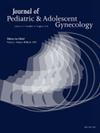青少年怀孕的围产期结局:对佛罗里达州2000-2019年360万例分娩的回顾性分析。
IF 1.8
4区 医学
Q3 OBSTETRICS & GYNECOLOGY
引用次数: 0
摘要
研究目的:我们旨在比较佛罗里达州青少年分娩与成人分娩的不良产科结局风险,并比较年轻和年龄较大的青少年分娩的风险。方法:我们使用佛罗里达州2000年至2019年的活产母婴关联数据库进行了一项基于人群的回顾性队列研究。以25-29岁年龄组为参照,每隔5年对人口学和临床特征以及产科和新生儿结局进行比较。使用边际标准化来估计风险比(RR)和95%置信区间(CI),代表母亲年龄与相关结局之间的关联。p值< 0.05认为有统计学意义。结果:在3614,274例分娩中,青少年怀孕(10-19岁)占分娩的8.1%。青少年分娩的胎儿生长受限和出生体重低的比例更高,剖腹产、胎膜早破和充分的产前护理的可能性更小。早产、呼吸窘迫综合征、新生儿/婴儿死亡和母亲败血症在青少年中也明显更高,在最年轻的青少年分娩中发病率最高。年龄较小的青少年也有选择性地增加高血压疾病(HTNP)的风险。结论:少女母亲在一些产科和新生儿结局方面的风险增加,最年轻的母亲在某些结局方面的风险最高。这些结果表明,对少女怀孕进行量身定制的产前和分娩护理是必要的,但需要更大规模的研究来证实我们的发现。本文章由计算机程序翻译,如有差异,请以英文原文为准。
Perinatal Outcomes in Adolescent Pregnancies: A Retrospective Analysis of 3.6 Million Deliveries from 2000 to 2019 in Florida
Study Objective
We aimed to compare the risk of adverse obstetrical outcomes in adolescent deliveries to adult deliveries in Florida, and to compare the risks between younger and older teenage deliveries.
Methods
We conducted a population-based retrospective cohort study using a linked maternal-infant database of livebirths in Florida from 2000 to 2019. Demographic and clinical characteristics, and obstetric and neonatal outcomes of interest were compared by groups with 5-year intervals, using ages 25-29 as reference. Marginal standardization was used to estimate risk ratios (RR) and 95% confidence intervals (CI) representing the association between maternal age and outcomes of interest. A P value < .05 was considered statistically significant.
Results
Of the 3,614,274 deliveries, adolescent pregnancy (10–19-year-olds) comprised 8.1% of deliveries. Teenage deliveries had higher rates of fetal growth restriction and low birth weight, and were less likely to have a cesarean birth, premature rupture of membranes, and adequate prenatal care. Preterm birth, respiratory distress syndrome, neonatal/infant death, and maternal sepsis were also significantly higher in teens, with highest rates among the youngest teen deliveries. Younger teens also had selectively increased risk of hypertensive disorders (HTNP).
Conclusion
Adolescent mothers are at increased risk for several obstetric and neonatal outcomes, with the youngest mothers are at highest risk of certain outcomes. These results suggest that tailoring prenatal and intrapartum care in teenage pregnancies may be warranted, however larger studies are needed to corroborate our findings.
求助全文
通过发布文献求助,成功后即可免费获取论文全文。
去求助
来源期刊
CiteScore
3.90
自引率
11.10%
发文量
251
审稿时长
57 days
期刊介绍:
Journal of Pediatric and Adolescent Gynecology includes all aspects of clinical and basic science research in pediatric and adolescent gynecology. The Journal draws on expertise from a variety of disciplines including pediatrics, obstetrics and gynecology, reproduction and gynecology, reproductive and pediatric endocrinology, genetics, and molecular biology.
The Journal of Pediatric and Adolescent Gynecology features original studies, review articles, book and literature reviews, letters to the editor, and communications in brief. It is an essential resource for the libraries of OB/GYN specialists, as well as pediatricians and primary care physicians.

 求助内容:
求助内容: 应助结果提醒方式:
应助结果提醒方式:


